Digital Experience Management (DXM or DEM), is a relatively new phrase, but a very significant part of today's global business vernacular.
We work, shop, play, and do business predominantly through various digital channels, so digital experience management - DXM solutions - play a vital role in successful business outcomes.
This applies to both the customers and the employees that you rely on to achieve your business objectives.
In this guide, we'll show you everything you need to know about digital experience management, and introduce our newest solution RemoteInsight, set to revolutionize remote digital experience management.
Find out more about RemoteInsight
What is digital experience management (DXM)?
A digital experience is the interaction between a user and a business - made possible through digital technologies and online interactions.
A digital experience management platform is not only a valuable part of the business strategy for an organization's marketing team; it also plays a vital role in enabling businesses to create a superior digital experience for their remote employees.
This underscores the importance of digital experience monitoring to optimize digital experiences and achieve increased customer satisfaction.
Using digital experience management software, DXM monitors and optimizes the digital experiences that influence user satisfaction and customer engagement. This encompasses all interactions and digital touchpoints across multiple channels and digital platforms.
Digital Experience (DX) vs. Customer Experience (CX)
Understanding the differences between digital experience and customer experience is important to appreciate the significance of DXM in fostering exceptional digital journeys, not only for customers, but remote workers, such as those in contact center operations, and employees with outward facing roles in sales, marketing etc.
The two terms are intricately interconnected, and digital experience is a critical component of customer experience because without satisfactory digital experiences, a great customer experience is difficult to achieve:
-
It becomes difficult if not impossible to follow the customer journey, provide personalized experiences, and engage customers.
-
A great digital experience influences customer loyalty and satisfaction
-
It encompasses the entire spectrum of interaction that customers have with a brand, including customer service and product usage.
In broader terms, experience management encapsulates the holistic management of the entire business ecosystem, covering not only customers but also employees, products, processes, and branding.
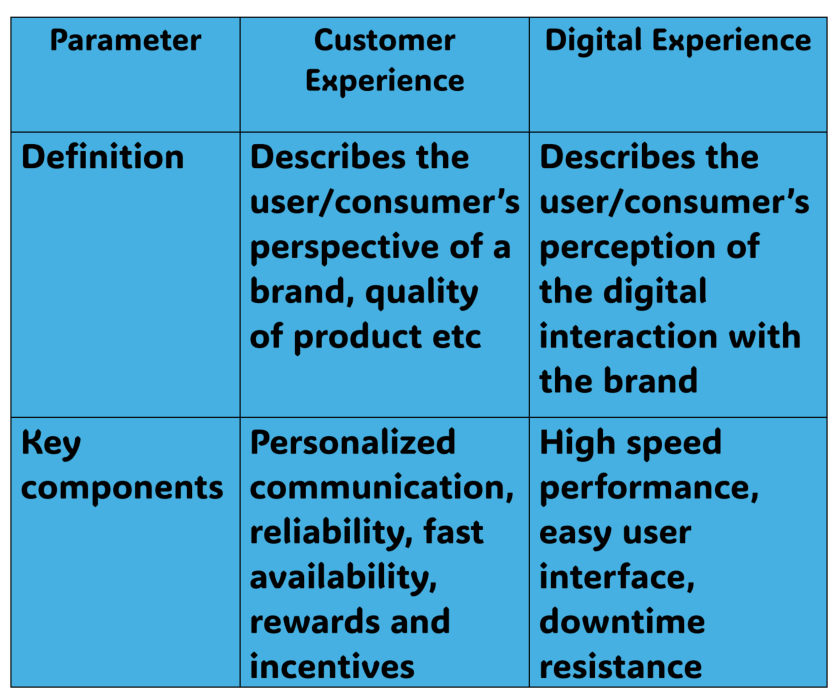
Find out more about how you can enhance customer experience
Why is digital experience management important?
A digital experience manager is a vital element of successful businesses because it monitors and collects valuable information that directly relates to the user journey through websites, mobile apps, social media, and other digital channels.
But a digital experience management monitor also captures customer data relating to all your digital experiences including navigation, content consumption, digital transactions, and support interactions.
This important information is then used to track various metrics such as:
-
Customer loyalty
-
User behavior
-
Customer expectations
-
Customer experiences
-
Customer satisfaction scores
These data driven insights are vital to create digital experiences and streamlined processes that not only positively influence customer behavior, but provide the experience that customers expect from a brand.
Research by PWC has revealed that 32% of customers will abandon a brand - even one that they've been loyal to - after a single bad experience.
As mentioned, digital experience and customer experience are so closely intertwined, that digital experience monitoring is emerging as mission critical to businesses, or they face consequences like those below.
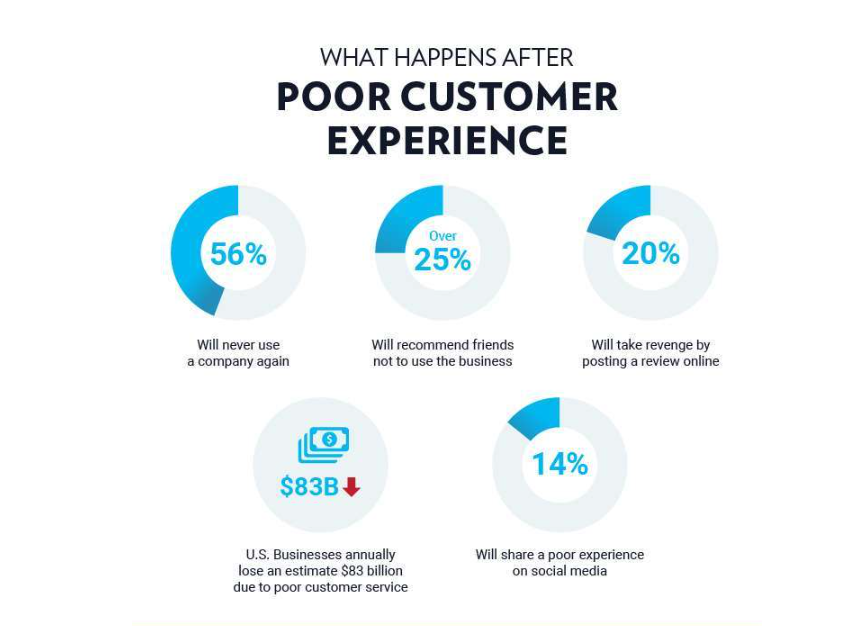
Image source: ProbecX
The digital employee experience
We've discussed customer experience, and the importance of being able to monitor digital touchpoints across all digital channels including mobile apps. But a great user experience is just as important for digital employees.
In a survey of enterprise IT leaders, it was revealed that around 78% of workers now use 6-10 digital tools on average just to communicate and carry out their tasks in the workplace, and not only in an office environment.
What employees expect from their digital experience is just as relevant as what customers expect across the digital landscape, particularly for employees with customer-facing roles.
This highlights the importance of a consistent experience across all the various tools and devices that employees use daily.
Repeated performance issues, or bad experiences across any digital touchpoint can derail a worker's productivity and motivation, affect deadlines, and even contribute to employee attrition.
For example, empowering contact center agents with a robust, centralized digital experience management platform providing real-time customer insights and interaction history can equip them to provide better customer service and customer engagement.
Digital experience management solutions empower agents to offer more informed and personalized support, leading to faster issue resolution.
Another use case for a digital experience management solution is remote workers with outward facing roles. This encompasses those in sales or account management who need seamless interactions with clients to ensure productivity, win business, and meet deadlines and KPIs.
The key takeaway here is that managing the digital employee user experience is as vital to businesses as managing customer needs and customer experiences.
Digital experience management components
There are several components to an experience management platform that can significantly elevate digital experiences.
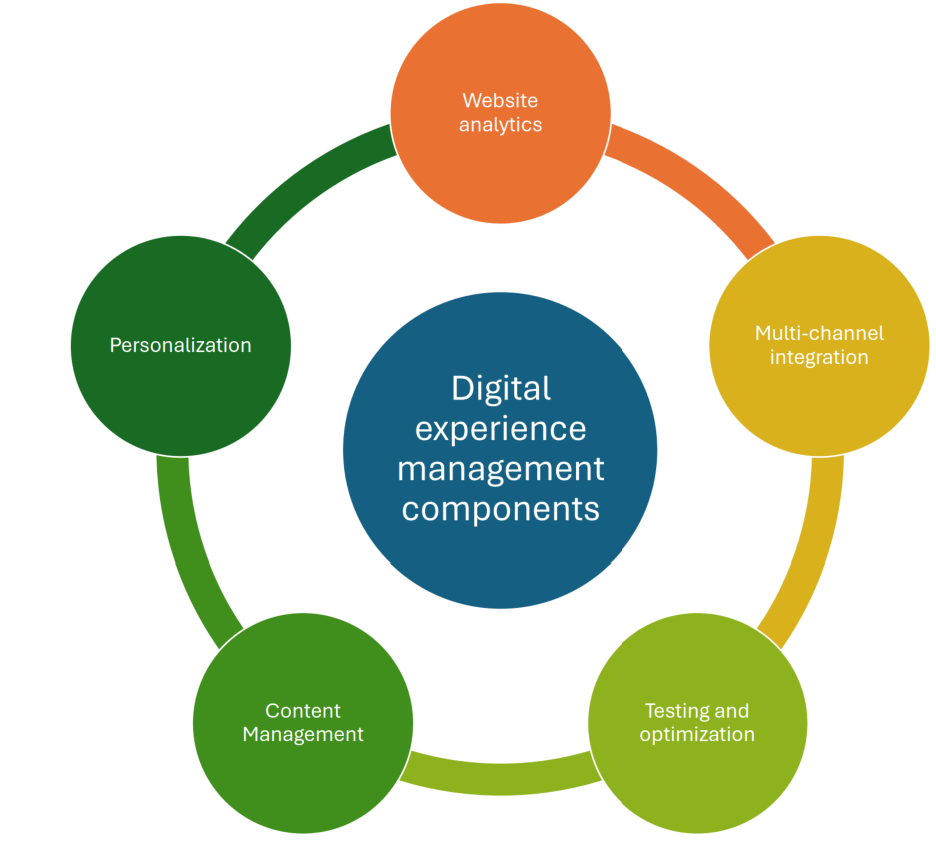
Website Analytics
To start optimizing the digital experiences of your employees and customers, you need data-driven decision-making. Analytics tools gather data and valuable insights on user behavior, conversion rates, page load times, site visits, engagement metrics, and other relevant information. Deep insights into this data can identify various trends, patterns, and areas for improvement to the digital experience.
Personalization
In the digital realm, to build the right digital experience platform, organizations need to include the ability to personalize content and make it relevant to individual users. Digital experience management solutions can help you with with audience targeting and segmentation so that you can enhance user experience.
Multi-Channel Integration
Multichannel integration in a digital experience refers to the practice of interacting with customers by utilizing a combination of indirect and direct communication channels. This includes websites, direct mail, email, mobile text messaging etc. Digital Experience Management integrates different technologies to improve these experiences by monitoring content management systems (CMS), customer relationship management (CRM) tools, analytics software, and other technologies to ensure a better user experience.
Content Management
Content Management Systems (CMS) traditionally managed content for one single channel, such as a website or app. A headless CMS creates, stores and manages content in one location, for seamless integration across any device or channel. This enables easier digital experience management across all communication channels.
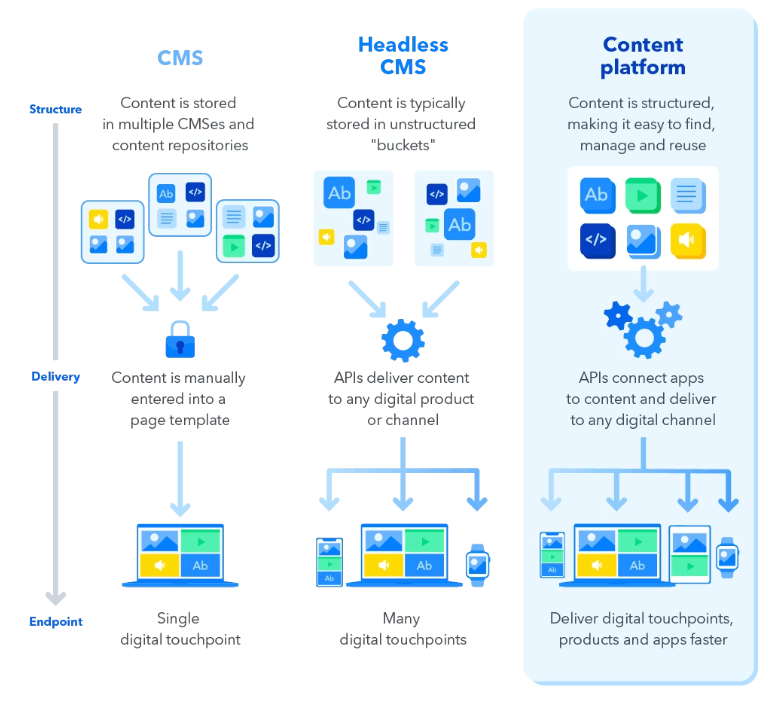
Image source: Contentful
Testing and Optimization
Testing various elements of the digital experience is crucial to achieve a great experience. So testing website design, messaging, and calls to action, are necessary to identify the most effective approach. The data harvested from testing is then used to optimize the digital experience to improve engagement and conversions.
The benefits of digital experience management
The flexibility of the modern digital workplace and the complexity of the digital marketplace means that digital experience management is absolutely vital to business success. The benefits of a digital experience monitoring platform include:
Improving the omnichannel experience
As customers and employees navigate the digital landscape using various channels and devices, you can offer a seamless experience with digital experience management.
User Satisfaction
Paying customers are demanding more and more value for their money, while employees want to do the best job they can with their digital tools. A DXM platform can help ensure that customers have positive experiences and remain loyal spenders, while workers can excel in their roles.
Operational Efficiency
Digital experience management can also help improve operational efficiency, both in the workplace, and marketplace. It can help streamline collaboration, while boosting customer retention, and providing increased business agility.
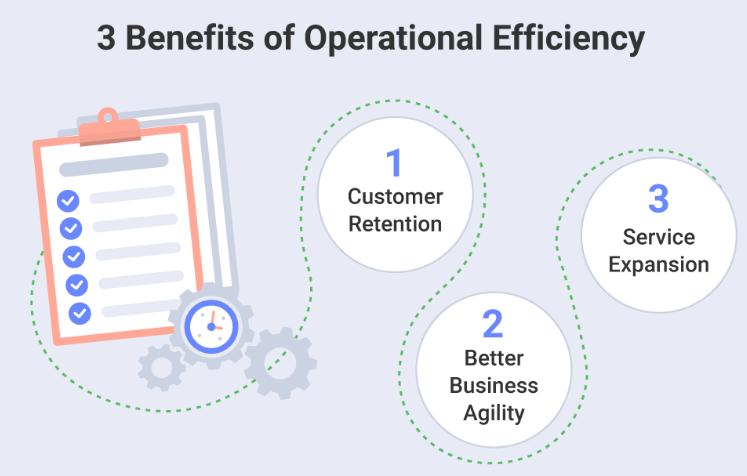
Image source: Slingshot
Data-Informed Decision Making
Part of digital experience management includes real user monitoring across digital channels and digital services. This real time data provides crucial insights into various business decisions and pain points within an organization. Managers can then use these insights to improve services, employee training and resource allocation, as well as develop new products and services in their marketplace.
Challenges you can overcome with a Digital Experience management platform
Life wouldn't be life without challenges, even though they can be overcome with the right solutions. Here are three of the challenges faced by organizations that a DXM platform can help make disappear:
Siloed Data
Being data rich but insight poor is a result of siloed data across multiple platforms, which can prevent a true understanding of customer and employee experience. The analytics of a digital experience platform can overreach these silos, enabling businesses to determine the effectiveness of individual channels and make data-driven decisions.
The cost of multiple technologies
Managing multiple 'best of breed' technologies often increases the total cost of ownership and involves crippling overheads. A digital experience platform provides in-depth out-of-the-box functionality from advanced personalization to CRM, allowing a unified user experience across channels without the need to build costly and time-consuming integrations.
Unable to evaluate what a personalized CX should be
A digital experience platform contains intelligent components including content and product recommendations, that can automatically guide customers towards the right content to advance their customer journey. These recommendations are based on not only historic data, but through capabilities such as customer sentiment intelligence, and customer journey mapping.
How IR RemoteInsight Can Help
Many organizations are finding it challenging deploying the right tools to provide the level of insight they need to resolve performance issues for remote users.
Many experience management solutions can detect if there is a problem somewhere in their digital channels, but not exactly where and what the problem is, why it's occurring or how to fix it.
RemoteInsight - an enterprise organization's most valuable tool
RemoteInsight is the newest addition to the Collaborate suite of performance management solutions, and we predict it will become an enterprise organization's most valuable experience management tool.
RemoteInsight has been designed specifically as a remote digital experience management solution. It delivers true end-to-end observability for remote locations, empowering employees to get the best experience possible from their digital applications, software and devices.
The extensive level of insight offered by RemoteInsight goes beyond detecting if there is a problem - it identifies exactly what the problem is, and can troubleshoot the specific fault to the point of resolution.
Businesses need an all-encompassing solution to view and address issues that could otherwise derail employee and customer experiences, resulting in the loss of valuable time, money and resources.
Find out how RemoteInsight can help prevent lost business, maintain brand consistency and help keep cross functional teams communicating, meeting and exceeding goals.




